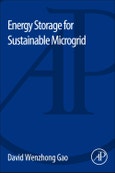Energy Storage for Sustainable Microgrid addresses the issues related to modelling, operation and control, steady-state and dynamic analysis of microgrids with ESS. This book discusses major electricity storage technologies in depth along with their efficiency, lifetime cycles, environmental benefits and capacity, so that readers can envisage which type of storage technology is best for a particular microgrid application. This book offers solutions to numerous difficulties such as choosing the right ESS for the particular microgrid application, proper sizing of ESS for microgrid, as well as design of ESS control systems for proper interfacing with the microgrid.
Please Note: This is an On Demand product, delivery may take up to 11 working days after payment has been received.
Table of Contents
Foreword 1. Basic Concepts and Control Architecture of Microgrids 2. Applications of ESS in Renewable Energy Microgrids 3. Interfacing Between an ESS and a Microgrid 4. Sizing of Energy Storage Systems for Microgrids








